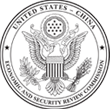×
Filter Results
Filter Results

Staff Paper
Written by USCC Research Coordinator John Dotson

Issue Brief
Written by USCC Research Fellow Amy Chang

Staff Paper
Written by USCC Research Assistant Katherine Koleski and Research Fellow Joseph Casey

Staff Paper
Written by USCC Research Assistant Katherine Koleski

Contracted Research
Prepared for the USCC by Micah Springut, Stephen Schlaikjer and David Chen, CENTRA Technology, Inc.

Staff Paper
Written by USCC Policy Analyst Nargiza Salidjanova

Contracted Research
Prepared for the USCC by Roger Cliff, Chad J.R. Ohlandt, and David Yang, RAND Corporation

Staff Paper
Prepared by USCC staff with the support of Reperi LLC

Contracted Research
Prepared for the Commission by Stephen Olson and Clyde Prestowitz, The Economic Strategy Institute

Issue Brief
Written by USCC Policy Analyst Lee Levkowitz and Research Intern Nathan Beauchamp-Mustafaga
